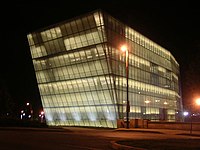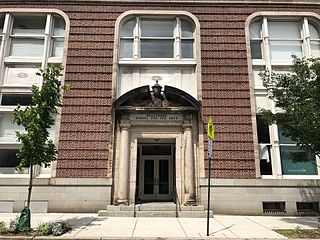
The Baltimore School for the Arts (BSA) is a public performing arts high school located in Mount Vernon, Baltimore, Maryland, United States and is part of the Baltimore City Public Schools system. Established in 1979, The Baltimore School for the Arts offers art concentrations in vocal music, instrumental music, acting, theater production, dance, visual arts and film. The high school has produced numerous "Presidential Scholars" in the Arts and its students have gone on to attend major conservatories and Ivy League Schools.
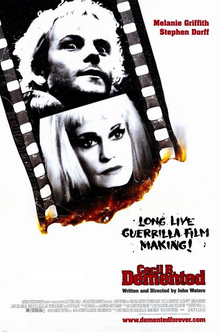
Cecil B. Demented is a 2000 black comedy film written and directed by John Waters. The film stars Melanie Griffith as a snobby A-list Hollywood actress who is kidnapped by a band of terrorist filmmakers; they force her to star in their underground film. Stephen Dorff stars as the eponymous character and leader of the group, with Alicia Witt, Adrian Grenier, Michael Shannon, and Maggie Gyllenhaal co-starring as the rest of his gang of filmmakers.
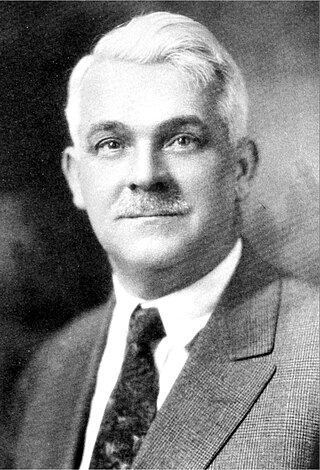
Thomas White Lamb was a Scottish-born, American architect. He was one of the foremost designers of theaters and cinemas of the 20th century.
Landmark Theatres is a movie theatre chain founded in 1974 in the United States. It was formerly dedicated to exhibiting and marketing independent and foreign films. Landmark consists of 34 theatres with 176 screens in 24 markets. It is known for both its historic and newer, more modern theatres. Helmed by its President Kevin Holloway, Landmark Theatres is part of Cohen Media Group.
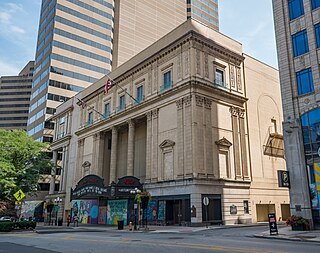
The Ohio Theatre is a performing arts center and former movie palace on Capitol Square in Downtown Columbus, Ohio. Known as the "Official Theatre of the State of Ohio", the 1928 building was saved from demolition in 1969 and was later completely restored. The theater was declared a National Historic Landmark in 1977.

The Lyric Performing Arts Center is a music venue in Baltimore, Maryland, United States, located close to the University of Baltimore law school. The building was modeled after the Concertgebouw concert hall in Amsterdam, and it was inaugurated on October 31, 1894, with a performance by the Boston Symphony Orchestra and Australian opera singer Nellie Melba as the featured soloist. Beginning in 1904, it was also used for touring performances by the Metropolitan Opera, and from 1950, it was the home of the Baltimore Opera Company until that company's liquidation in 2009.

The Hippodrome Theatre is a regional professional theatre in downtown Gainesville, Florida, United States. It was founded in 1973 by local actors and was added to the U.S. National Register of Historic Places on July 10, 1979.

The Houston Theater District, a 17-block area in the heart of Downtown Houston, Texas, United States, is home to Houston's nine professional performing arts organizations, the 130,000-square-foot (12,000 m2) Bayou Place entertainment complex, restaurants, movies, plazas, and parks. More than two million people visit the Houston Theater District annually.

The Charles Theatre, often referred to as simply The Charles, or, even more simply, The Chuck, is the oldest movie theatre in Baltimore. The theatre is a Beaux-Arts building designed as a streetcar barn in 1892 by Jackson C. Gott, located in what is now the Station North arts and entertainment district. The theater was renamed the Charles circa 1959 and became a calendar revival house in 1979. Many of John Waters's early films premiered at this theatre; this honor has since shifted to the Senator Theatre.

The Maryland Theatre is a music and entertainment venue located in the Arts and Entertainment District of downtown Hagerstown, Maryland. It was built in 1915, partially destroyed by fire in 1974, reopened in 1978, and expanded into a full performing arts complex in 2019. The theatre's seating capacity is 1,279 people, and it hosts performances of symphony orchestras, country artists, comedians, children's shows, pop stars, recitals, stage shows, and others. Over 81,000 patrons attended performances at the Maryland Theatre in 2005, making it one of Maryland's premier venues for the performing arts. The Maryland Symphony Orchestra performs there regularly and has been headquartered in the building since 2019. The theater features a fully restored Wurlitzer theatre organ.

The Senator Theatre is a historic Art Deco movie theater on York Road in the Govans section of Baltimore, Maryland. It is the oldest operating movie theater in central Maryland and is listed on the National Register of Historic Places and is a designated Baltimore City Landmark.

The Keith-Albee Theatre is a performing arts center in downtown Huntington, West Virginia, United States. It was named after the Keith-Albee-Orpheum Corporation, one of the leading traveling vaudeville performance companies of the early 20th century, in an effort to convince the corporation's directors to make Huntington a regular stop.

John Adolph Emil Eberson was an Austrian-American architect best known for the development and promotion of movie palace designs in the atmospheric theatre style. He designed over 500 theatres in his lifetime, earning the nickname "Opera House John". His most notable surviving theatres in the United States include the Tampa Theatre (1926), Palace Theatre Marion (1928), Palace Theatre Louisville (1928), Majestic Theatre (1929), Akron Civic Theatre (1929), the Paramount Theatre (1929), the State Theater 1927, and the Lewis J. Warner Memorial Theater (1932) at Worcester Academy in Worcester, Massachusetts. Remaining international examples in the atmospheric style include both the Capitol Theatre (1928) and State Theatre (1929) in Sydney, Australia, The Forum and Le Grand Rex.

Eutaw Street is a major street in Baltimore, Maryland, mostly within the downtown area. Outside of downtown, it is mostly known as Eutaw Place.

Fullerton is an unincorporated community in Baltimore County, Maryland, United States. The area is often considered part of Nottingham, despite being part of Overlea. Fullerton residents have either 21236 or 21206 as their ZIP code.
Broadway Across America (BAA) is a presenter and producer of live theatrical events in the United States and Canada since 1982. It is currently owned by the John Gore Organization, which purchased it from Live Nation in 2008.

The Mississippi Lofts and Adler Theatre is an apartment building and theater complex located in downtown Davenport, Iowa, United States. It is individually listed on the National Register of Historic Places by its original name, the Hotel Mississippi and RKO Orpheum Theater. The Hotel Mississippi was listed on the Davenport Register of Historic Properties in 2005. In 2020 the complex was included as a contributing property in the Davenport Downtown Commercial Historic District.

Westside Baltimore is the western portion of downtown Baltimore that includes Market Center and many of the newest developments in downtown Baltimore. It has increasingly become the preferred residential section of downtown. It is also home to the site of the "Superblock" project that will include hundreds of condos and apartments as well as a variety of retail and commercial space. The former home of Baltimore's many and famed department stores, Westside Baltimore is now anchored by the University of Maryland, Baltimore consisting of the University of Maryland Health System, University of Maryland School of Law and the University of Maryland Biopark. The Westside is also home to several performing arts centers, including the Hippodrome Theatre, Royal Farms Arena and the future home of the Everyman Theatre.

The Stavros Niarchos Foundation Parkway, or simply the Parkway, is a movie theater located at 5 West North Avenue in Baltimore, Maryland. The Parkway is open as of May 3, 2017, and is the new permanent home of MdFF. The Maryland Film Festival, a 5-day annual festival created and operated by MdFF, is housed in and around the Parkway and throughout the Station North Arts and Entertainment District.
Shea's Hippodrome Theatre was a movie house that opened in 1914 in Buffalo, New York. It was renamed the Center Theater, following a renovation in 1951. In 1983, the theater closed and the building was demolished.






















